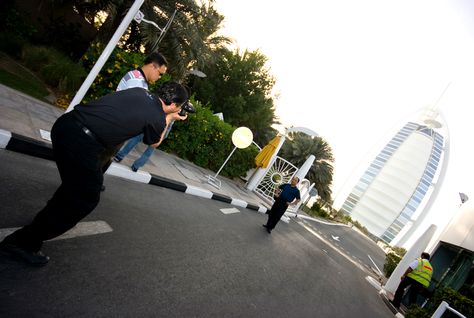 Dubai welcomed more than 5.5 million tourists in the first half of 2013, representing an 11.1 percent year-on-year increase.
Dubai welcomed more than 5.5 million tourists in the first half of 2013, representing an 11.1 percent year-on-year increase.
International tourist arrivals to the Middle East grew by 13 percent during the first half of 2013 compared to the same period last year, according to a global tourism organisation.
The UN's World Tourism Organisation said the region had witnessed a rebound "after two years of negative growth".
However, it said that results "should be taken with caution" as growth was uneven across destinations in the region and was based on limited available data.

| Advertisement |
The figures did not give a breakdown for the region but last month it was announced that Dubai had welcomed more than 5.5 million tourists in the first half of 2013, representing an 11.1 percent year-on-year increase.
The UNWTO said in its statement that international tourist arrivals globally rose by five percent in H1, reaching almost 500 million.
Growth was above the projection made at the beginning of the year (3-4 percent) and is also exceeding the trend of the UNWTO long-term outlook Tourism Towards 2030 (3.8 percent a year).
Destinations around the world welcomed an estimated 494 million overnight visitors in the first six months of 2013, according to UNWTO World Tourism Barometer.
This represented an additional 25 million international tourists compared to the same period of 2012.
Growth was stronger in emerging economy destinations (up 6 percent) than in advanced economies (up 4 percent), a trend which has marked the sector for many years now.
"The fact that international tourism grew above expectations confirms that travelling is now part of consumer patterns for an increasing number of people in both emerging and advanced economies," said UNWTO secretary-general Taleb Rifai.
"This underlines the need to rightly place tourism as one of the key pillars of socio-economic development, being a leading contributor to economic growth, exports and jobs," he added.
In a still uneven global economic environment, results were positive in all regions and subregions, though the overall picture was mixed.
Europe (up 5 percent) performed surprisingly stronger than expected, driven by Central and Eastern Europe. Asia and the Pacific (up 6 percent) also exceeded expectations but results were weaker than anticipated in the Americas (up 2 percent), as South America and the Caribbean lagged behind.
China (up 31 percent) and Russia (up 22 percent) led the growth in expenditure on travel abroad among the top ten most important source markets in the world during the first half of 2013.
Expenditure from traditional markets, on the other hand, was more modest. Canada (up 3 percent) and France (up 2 percent) led the group, followed by the flat results of the United States, Germany and the United Kingdom, and negative figures from Japan, Australia and Italy.








 Search our database of more than 2,700 industry companies
Search our database of more than 2,700 industry companies









